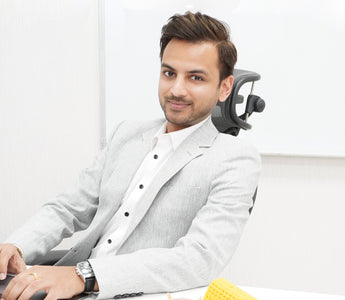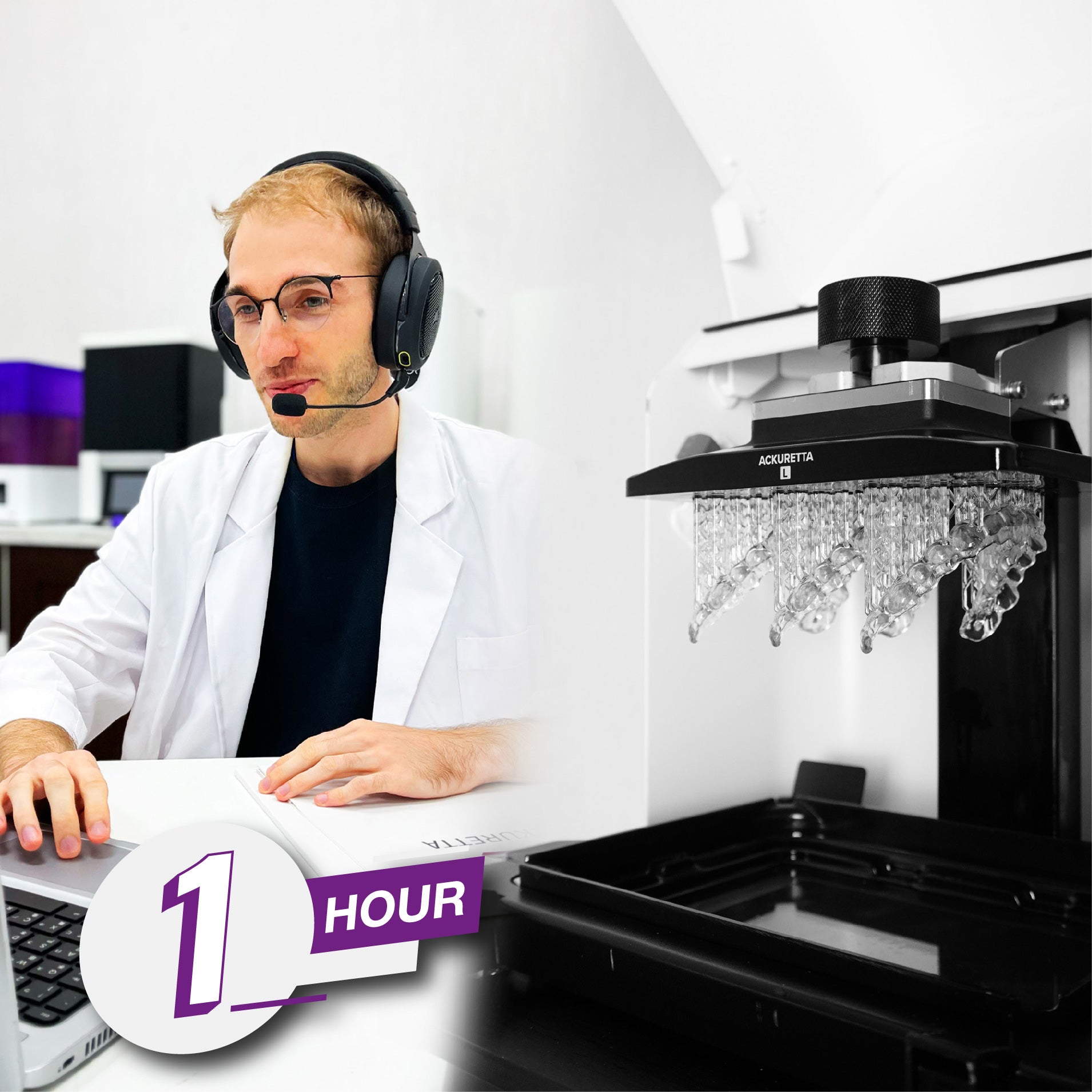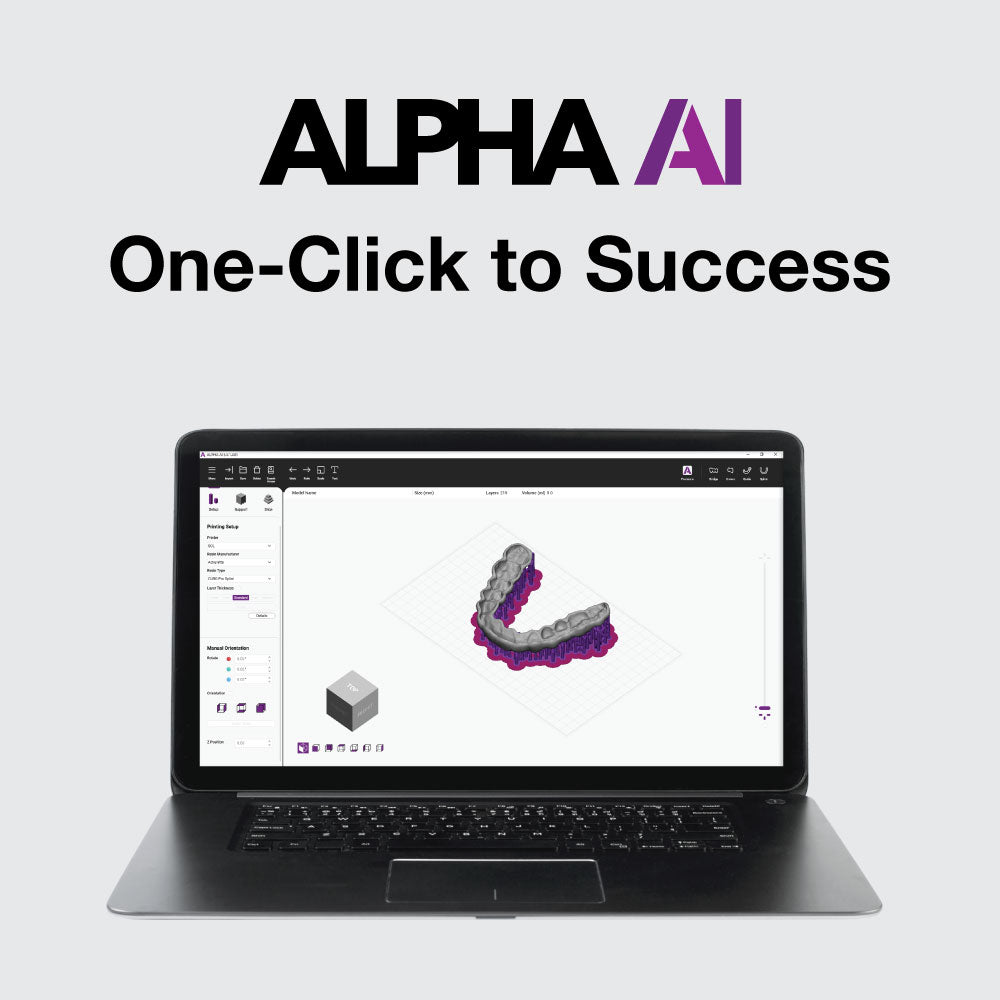An Interview with Ackuretta's CEO – Ayush Bagla
3D printing is quickly becoming the industry standard in dentistry. Same-day chairside solutions are being recognized as the key to delivering faster, better results at a lower cost to patients, clinicians, and labs.
Ackuretta has been building a name for itself as a leader in the business. Since 2013, it has been innovating and expanding its additive manufacturing technology and currently reaches over 80 countries worldwide. With the goal of producing chairside same-day dental solutions, it offers a full ecosystem, including slicing software, 3D printers, washing units and UV boxes.
Last month, we sat down with CEO Ayush Bagla to discuss the company’s roots, where it’s at now, how technology can provide the solution to global problems, and where he sees the future of the company, and the industry. And from where he’s standing, 3D printing isn’t slowing down anytime soon.
[Editor’s note: Responses have been lightly edited for clarity and flow.]
Ayush, tell us a bit about yourself and your background.
I grew up in Bangalore, India, but my family is originally from Myanmar. They are very entrepreneurial, and have worked hard to get where they are today. I have continued that family legacy with Ackuretta.
Continuing to support what my family built, there is a trust in our name in Rajasthan, India that supports a non-profit, helping the community by providing a hospital, a school, a marriage grounds and real estate for approximately 200 shops. We also provide 700 children with an education.
I attended a British school for almost 15 years in India, and then migrated to the UK for university. I was at Loughborough University to pursue additive manufacturing. While the university is renowned for its excellence in sports, it was one of only several select institutions to receive a significant grant from the government to set up an additive manufacturing lab. I therefore chose this location to pursue my Master’s.
How did Ackuretta start?
My focus in university was additive manufacturing, and I started out building formula race cars. When we were building those projects, we needed certain components. We went to a CNC [computer numerical control] shop and received a quotation for a specific component – they gave us a very high price, and said they needed a month to do it. While looking for alternatives, I learned that the father of one of the other team members was in the rapid prototyping business. When consulting with him, he informed us that for the same product, they were able to significantly reduce the cost, and do it in only three days.
When we got the product in three days we were like, “Wow, it really works. Performance is there, we paid less money, and we got it immediately, so we’re happy all around.”
And when reflecting on this issue, I realized that if I have this problem, other people are going to as well. Additive manufacturing was an alternative that provided real, effective alternatives to a traditional workflow.
My Master’s project was to make unique designs in gold, so printing gold, for jewelry. We made some really nice filigree mesh work, but at the end of the project I realized this was not going to be commercially feasible in the long term.
“There’s 300 billion teeth on Earth, and all of them have problems and need maintenance.”
In 2013, we started Ackuretta with four industries – jewelry, dental, audiology and some prototyping. But in 2016, we noticed NextDent released 15 types of resins for various applications. We knew that this segment was going to be huge. Plus transitioning from jewelry to dental applications was based on the understanding that there are more people with teeth problems than people who wear jewelry.
What sets Ackuretta apart from other companies and products on the market?
Premium but Accessible.
We consider ourselves a premium segment, but premium is very relative. Whatever we make is the people’s champions – it’s something accessible to diverse users across the globe.
We want prosumers to be able to use these products, and bring value and benefit to their businesses. So our whole thought process for whatever we’ve made is bringing value for everyone.
Right now in the market, below USD$10 000, we’re one of the only solutions with the entire workflow – CAM software, printer, and cleaning and curing equipment – which can be used chairside. The other companies are significantly more expensive, and the ones that are cheaper don’t have the performance to be used chairside consistently or with the user experience that a dentist could accept on a mass level.
Unique Location.
One of our advantages is that we manufacture by ourselves in Taiwan. I went back to India for two years in 2013 after my education, during which time we tried to get the company off the ground, and to understand what would be required to build this sort of hardware business. But we faced many challenges – India simply does not have the supply chain, the required resources, or the ecosystem. And it is not a global player in the electronics or hardware industry. The manufacturing hub of the world is the far East – China, Korea, or Taiwan.
I spent some time visiting China and Taiwan, and I understood that China has its own regulations, business set-up and legal structure, and Taiwan is an easier transition and could provide a stepping stone to China if and when needed.
Choosing Taiwan as our base has allowed us to remain closer to our technology supply line, which in turn helps us stay updated on the latest tech and allows us to pivot an ever evolving business model while keeping our costs lower than most companies that have similar technology or user experience, but with their customer base located in the US or Europe, and their manufacturing happening abroad.
Support.
One of the key components of our business is the friendliness, knowledge and expertise of our tech and customer support. When people buy technology parts, what keeps them running is the backup – through customer support – that they get. And we have a resin business. Plus, the technology is so new that if we don’t keep it accessible, and continue to share our knowledge and train our customers to use it, then they are not going to use those products to their optimal capacity. Education, training, and ongoing support – whether in-person or virtual – are at the core of what we do at Ackuretta.
Global Community.
Being a global company, our strength is in building up a team to meet the needs and voices of our customers from all over the world. Owing to their upbringing and education, people from different parts of the world have a different skill set. To run a global business, if you don’t have a global team, it’s not going to be a successful business model. I actively cultivate an international team that brings new skills and experiences to help us better serve our customers, and continue to innovate.
Let’s talk about your biggest challenges and your greatest successes.
Running a hardware business itself is a challenge in a software world. I realized getting all these elements together to get this business going is incredibly challenging because it requires a multidisciplinary skillset. Not only engineering but finance, commercial, trade experience, certification and compliance; it requires knowledge of every aspect of business to get a manufacturing business off the ground.
We’ve also made a lot of pivots to survive in an ever-changing market. And it’s very difficult for a company – especially a growing company – to make pivots in technology. We have done the equivalent of a car company going from petrol to diesel to electric in under 10 years.
And in addition to making these pivots, in 2020 the COVID-19 pandemic made things even more difficult. There was nothing we could do, and we were facing losses and significant setbacks everyday.
We waited out the pandemic for as long as we could. I had a clear deadline, and fortunately there was a turn by the deadline. We were able to continue on our mission, and have now come back, stronger than before.
Successes.
I’m proud that we’re a company on a global scale. In addition to our base in Taiwan, we have been building up our team in the US, and we’re getting another team set up in Europe.
“We’ve made a good community within the company. There’s not a lot of politics inside, or people trying to get ahead of one another. It’s very collaborative and team-oriented.”
We have a strong, supportive internal structure, with a great team culture. We work as a team, and draw on each others’ strengths. And this international team reflects our global customer base – we’re there even in small countries, the unheard-of countries, the unsung heroes.
We managed to succeed on a global scale because of pure resilience. This resilience is financial and mental – your mental balance of not throwing in the towel.
What has changed in the last 9 years?
We are a global player now. We have a certain market share. We have a presence in over 80 countries, and our products are considered a very high standard in the market, so we bring value to the lives of people around us in a positive way.
We’re looking at the world on an industry level and serving a value proposition to a real world market problem, rather than thinking about the product problems and how to improve some efficiencies somewhere.
We want to be a market-driven business, not a product-driven business.
What do you think the future of dental 3D printing in general looks like in the next 10 years?
A large portion of people around the world cannot afford dentistry. Many people in low- and middle-income countries are seeing a high rate of oral diseases because that portion of the global population doesn't have access to dental care. So our products would give a lot of people that access, because of technology driving down the cost. And that's when technology is a true disruptor – technology only disrupts the industry when you have a cost-benefit relative to a traditional process. Or, and if it's cost, quality and time then it's even more disruptive. And this gives you all three, so it's very exciting, and extremely powerful.
Any final words you would like to share?
I think what makes it worthwhile is we're doing something that can be truly disruptive, and it can really change the way things go. The future holds so much potential for 3D printing, and I’m excited to explore it with all of you.























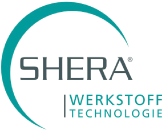








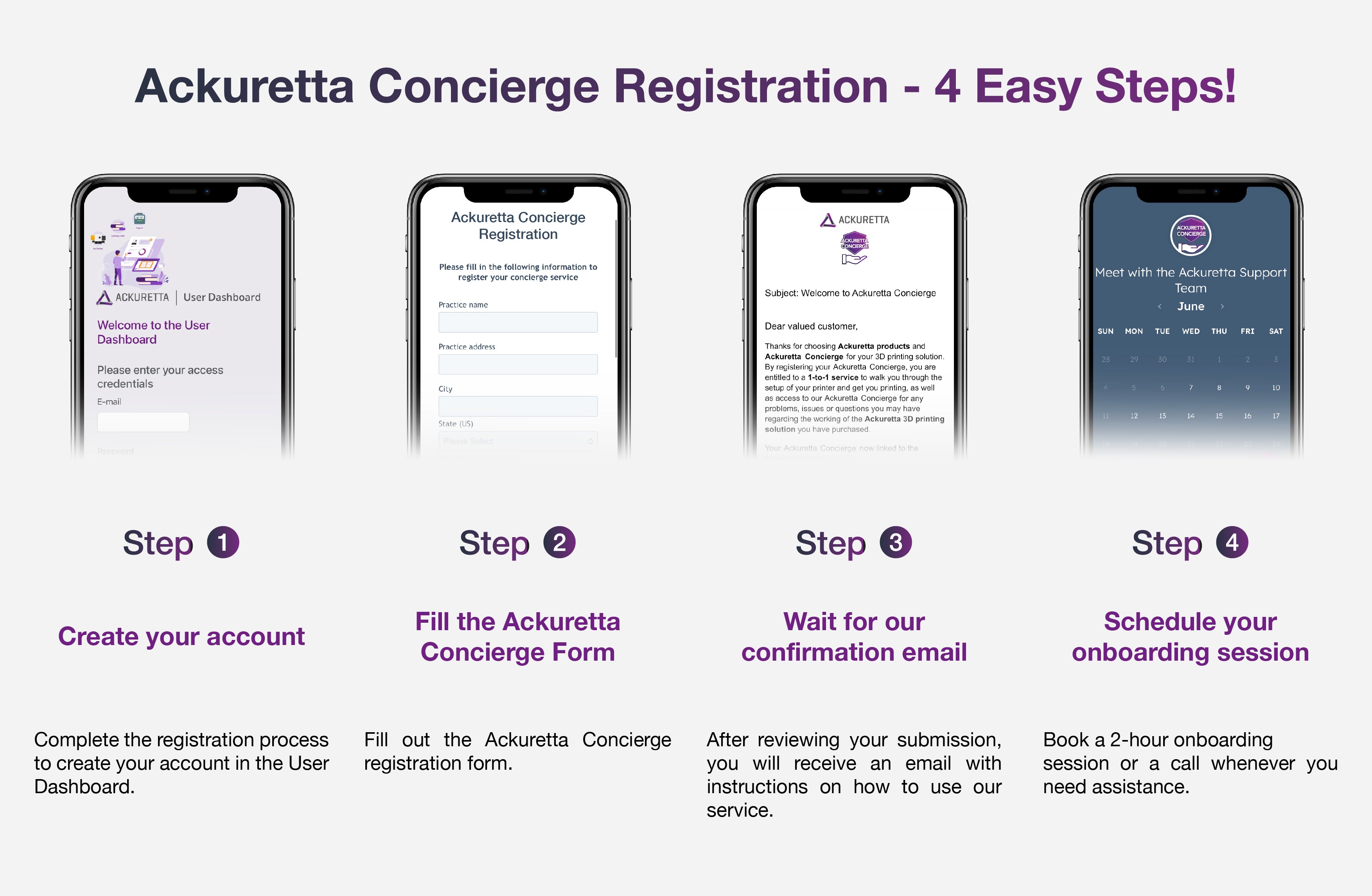






























 Loading ...
Loading ...
